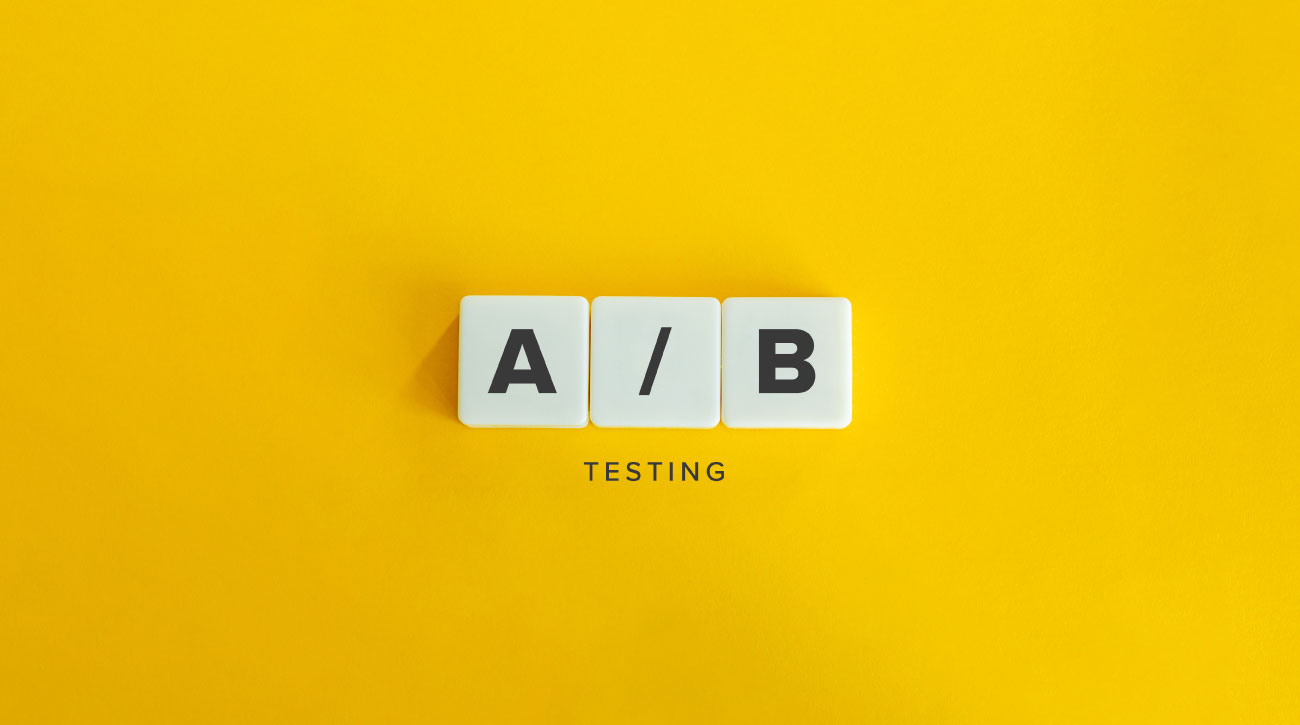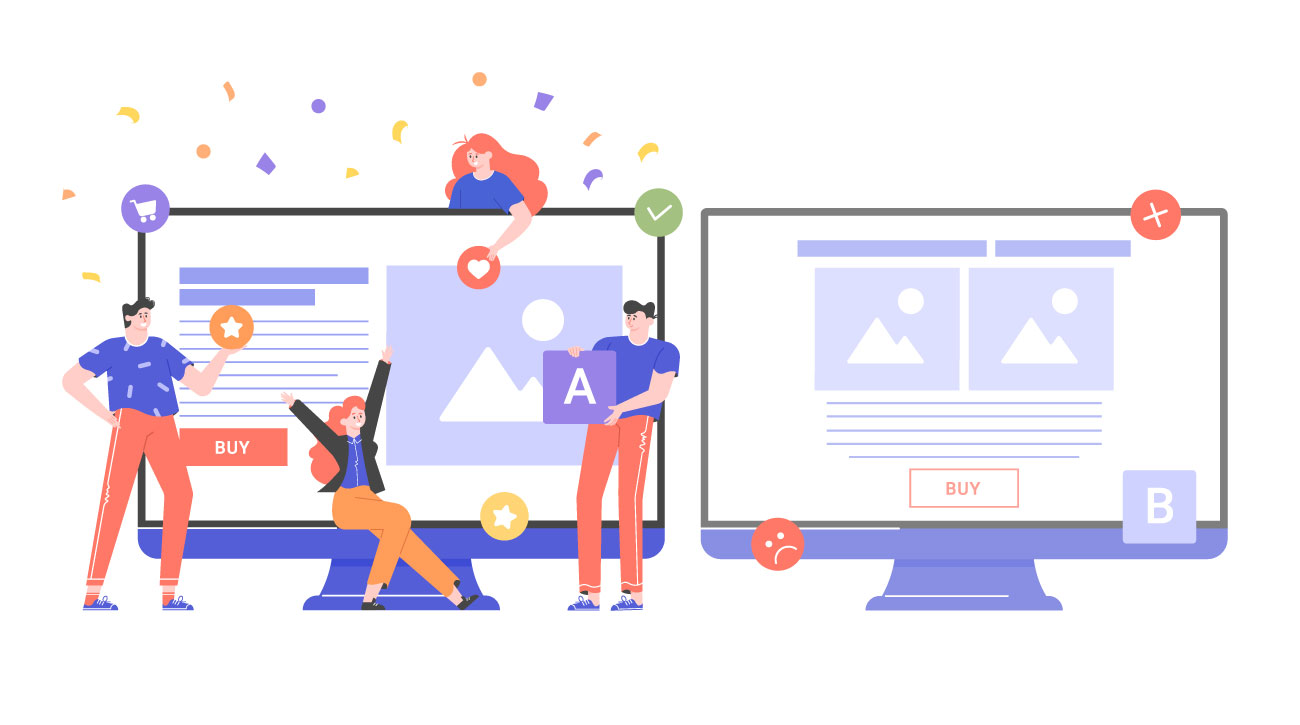
What is A/B Testing and How Does it Work?
Ever wondered if your landing page could perform better with a different headline, button colour, or even layout? Or perhaps if tweaking a few words could skyrocket your sales?
That’s exactly where A/B testing comes into play—your secret weapon to improving your digital marketing performance!
What Exactly is A/B Testing?
A/B testing, also known as split testing, is a straightforward yet powerful method used to compare two versions of a webpage, app, email, or any digital element to discover which one resonates best with your audience. Think of it as a digital showdown, where two slightly different versions compete head-to-head to win your visitors’ attention and actions.
Here’s a simplified example: imagine having two different headlines or images for the same landing page. By splitting your traffic equally between these two versions, you quickly learn which option generates better results, whether it’s increased clicks, conversions, or sales.
Why You Need A/B Testing
In today’s highly competitive digital landscape, a pitfall that businesses usually fall into is that they go by their hunch, their gut feeling without any data to justify their business decisions. A/B testing eliminates guesswork by delivering clear, actionable insights based on actual user behaviour and data-driven decisions. It helps you pinpoint exactly what your audience prefers, significantly boosting your conversion rates, optimising your marketing strategy, and enhancing overall user experience.
A/B testing doesn’t just improve results; it builds confidence in your marketing choices. Instead of relying on intuition, personal bias or subjective opinions, you have hard data backing your decisions—meaning your choices become consistently smarter and more strategic!
Simple right? Let’s dive into setting it up.
How Does A/B Testing Work?
Step 1: Define Your Objective
Begin by clearly stating your test goal. Are you aiming for higher click-through rates (CTRs), increased sales, or perhaps more newsletter sign-ups? Clearly defined goals help keep your testing focused and effective.
Step 2: Identify the Element to Test
Choose one, and only element to test first. This could be your headline, button colour, call-to-action wording, or image. Testing a single element at a time ensures you know exactly what caused the change in performance; it would kind of defeat the purpose if you introduce more variables into the test.
Step 3: Create Two Variants (Control vs. Variant)
Prepare two versions: your original page (control) and a modified page (variant). These slight differences between variants can significantly influence user behaviour, giving you a clear indication of preferences.
Step 4: Set Up and Run the Test
Launch your test by splitting your audience evenly across both versions. Use modern tools like, Unbounce, Optimizely, or VWO to streamline this process, making it easy to manage, track, and analyse your test’s progress.
Step 5: Measure and Analyse Results
Allow the test to run until you reach statistical significance—a clear indication that the results aren’t due to random chance. Analyse your data carefully to see which variant won, using clear metrics such as conversion rate, click-through rate (CTR), or engagement levels.
Common Elements to A/B Test
Understanding what elements you can test helps you strategise effectively. Here are some commonly tested elements that often yield valuable insights:
- Headlines and Titles: These are often the first thing visitors see, making them critical for capturing attention. Changing just a few words can significantly influence visitor engagement.
- CTAs and Button Designs: The effectiveness of your call-to-action can dramatically impact your conversion rate. Testing different button colours, sizes, wording, or placements can uncover surprising insights.
- Images and Visuals: Visual content is incredibly influential. Experimenting with different images, art direction, style and even colours can drastically affect how users interact with your content and brand.
- Forms and Page Layout: Simplifying your forms or adjusting your layout can remove friction from the user journey, increasing form completions and purchases.
- Pricing Structures: Pricing often impacts user decisions directly. Testing various pricing models or presentation methods can reveal what resonates best with your audience.
- Navigation and Menus: A clear and intuitive navigation system can drastically improve user satisfaction, encouraging visitors to explore more pages and spend more time on your site.
Best Practices for Effective A/B Testing
For successful testing, we suggest following these best practices is key. This ensures accuracy, reliability, and actionable insights:
- Focus on one change at a time: Testing multiple elements simultaneously can muddy results, making it difficult to pinpoint exactly what works best.
- Use adequate sample sizes: Sufficient visitor numbers are essential to achieve statistically significant and reliable results.
- Allow enough time: Rushing tests can lead to misleading conclusions. Give your tests sufficient duration to gather meaningful insights. This typically could mean 2 weeks to a month.
- Iterate and retest regularly: Testing isn’t a one-off activity; continuously retesting and refining your approach leads to constant improvement.
- Document your findings: Clearly recording your test outcomes helps in creating a robust and informed long-term testing strategy.
Tools for A/B Testing
Picking the right tools can make A/B testing straightforward and highly effective. Here are some popular and trusted options:
- Optimizely: Ideal for enterprises, offering robust features for extensive testing and experimentation. They offer many solutions, from a full-campaign management, to CMS management, to web and feature experimentation.
- VWO (Visual Website Optimizer): A user-friendly option packed with advanced features suitable for businesses of all sizes.
- Unbounce: Specialising in optimising landing pages to ensure maximum conversions, with easy to use A/B testing tools.
- AB Tasty: A comprehensive tool offering simplicity combined with powerful testing and personalisation features to enhance user experience.
Time to Test, Test, Test!
A/B testing isn’t just an optional extra—it’s essential for anyone serious about improving their digital performance. By systematically testing, analysing, and refining your approach, you’ll create experiences that your audience loves. It’s time to leverage data-driven decisions, boost your conversions, and start transforming your marketing strategy today!




